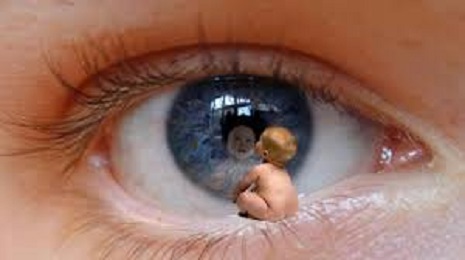Scientists reveal the real reason you have eyelashes

After measuring the dimensions of nearly two dozen mammal eyes, performing a series of wind tunnel experiments and engaging in some complex fluid dynamic modeling, researchers determined that most mammal eyelashes are one-third the length of their eyes -- just the right length to minimize the flow of air over the eyeball.
This reduction of airflow is important because less moving air across the eye keeps evaporation at bay and stops irritating dust from getting deposited on the eye surface, the scientists report in a study published Tuesday in the Journal of the Royal Society Interface.
"All mammals have wet eyes, and airflow is the enemy of that," said Guillermo Amador, a doctoral student at the Georgia Institute of Technology, and the first author on the paper.
The comprehensive research into eyelash function began in 2012, after senior author David Hu`s daughter was born with long, batting eyelashes, leading him to wonder about their function.
Hu, a mechanical engineer at the Georgia Institute of Technology, has been inspired by his young children before. The idea for a previously published study that found most mammals take 21 seconds to urinate, came to him while changing a diaper.
His eyelash quandary led him to send an undergraduate student to the basement of the Museum of Natural History in New York where a vast collection of animal pelts are stored. The student measured the eye slits and eye lashes of 22 mammals including a chimpanzee, red panda, porcupine, cougar and camel.
This revealed an intriguing pattern: Although the mammals varied in size from a 1-pound Amur hedgehog to an 1,100-pound giraffe, the length of their eyelashes was invariably one third the length of the animal`s eye.
To find out what made this ratio so special, the researchers built a 2-foot wind tunnel to mimic the airflow an animal would encounter while moving at a walking pace. They also constructed a fake eye out of a shallow aluminum pan 2 centimeters across.
Over a series of experiments, they surrounded the eye with one of three types of eyelash mimics -- a plastic mesh, fake eyelashes made from human hair purchased over the Internet, and paperboard.
After exposing the "eye" to the wind in the wind tunnel for 10 minutes at a time, the scientists found that paperboard was most effective at reducing evaporation and dust deposits. However, a nonporous material like that is not a practical solution for protecting eyes in the natural world because it interferes with vision.
The mesh and fake eyelashes gave the same result as each other. The researchers found that the protection these "eyelashes" gave to the eye increased as they grew longer, until they hit the optimum length of 1/3 the width of the eye. Beyond that length, evaporation and the deposition of dust particles went up.
The result surprised the researchers. "We thought these longer lashes would prevent evaporation, but if they get really long, they cause more evaporation than if there weren`t any eyelashes at all," Amador said.
Other experiments revealed that thick eyelashes are more effective at blocking airflow from moving across the eye, but they also limit access to light. This may explain why animals like giraffes and kangaroos that live in bright dusty environments have several rows of eyelashes while other mammals do not.
"There are trade-offs for densities," Amador said. "How much airflow do you want to protect, and how much light do you want to let in?"
Another unexpected result was that the curviness of an eyelash did not affect its function.
"What seemed to matter the most was not the total length of the eyelash, but how much it stuck out into the airflow," Amador said.
There may be practical applications to this work. For example, the authors say solar panels or sensors that take in light could benefit from being surrounded by eyelash-inspired filters to keep dust from landing.
But Hu`s team has already embarked on a different path of research. They plan to look at the little hairs between the lenses of insects` compound eyes.
"They are clearly blocking the amount of light they get, and we want to figure out why they have them," Amador said.















































